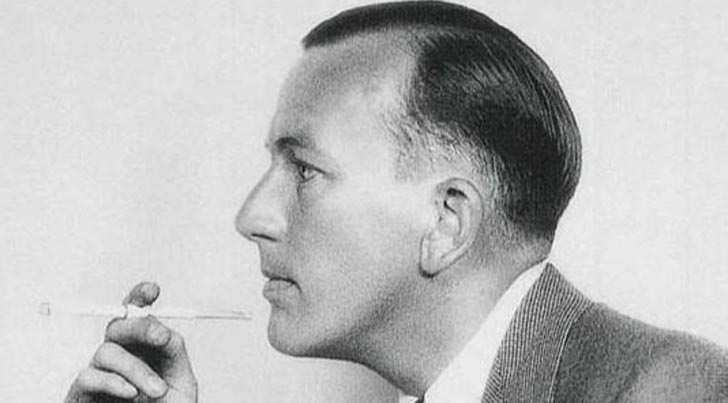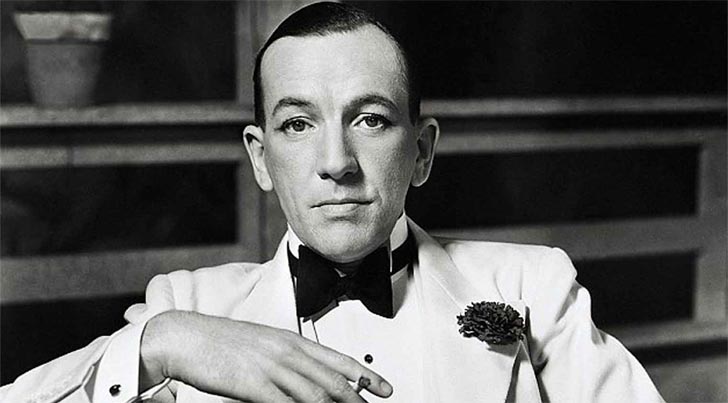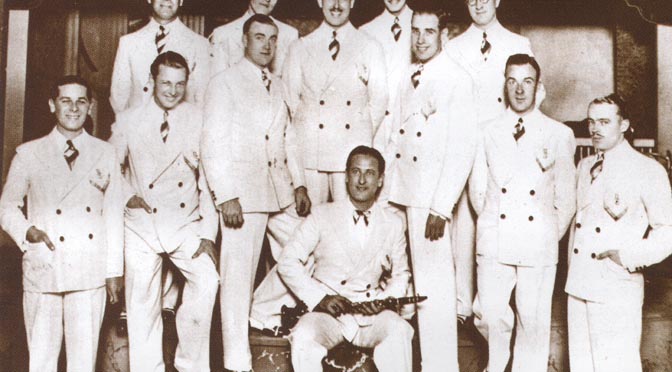“Mad about the Boy.” Words and music by Noël Coward for the 1932 revue Words and Music. Recorded in London on November 5, 1932 by Rudy Starita and His Ambassadors with vocalist Elsie Carlisle. 4 in 1 – 17 mx. X-218-2.
Personnel: probably Nat Star-cl-as dir. / Nat Gonella-t / t / tb / cl-as / cl-ts / vn / p / bj-g / bb-sb / Rudy Starita-d-vib-x
Rudy Starita and His Ambassadors (v. Elsie Carlisle) – “Mad About the Boy” (1932)
“Mad about the Boy” must be one of Sir Noël Coward’s most successful compositions, especially if we measure success by the fact that the song continues to be recorded and even used in advertising many decades after its debut on the London stage. It originated in the 1932 revue Words and Music, whose words, music, script, and direction were all done by Coward himself; the show included other memorable songs such as “Mad Dogs and Englishmen” and “Let’s Say Goodbye.” “Mad about the Boy” was sung on stage by a cast of female characters — a society lady, a prostitute, a schoolgirl, and a Cockney servant — who describe their passion for a movie star as they wait in line to see one of his films. The lyrics are predictably witty, using a surprising variety of rhymes for the monosyllables “mad” and “boy”.1
It is not clear whether the song was meant to reference a specific film actor. A great deal of effort has been put into identifying an unrequited real-life crush that Coward is said to have had on some American actor (the name Douglas Fairbanks, Jr. comes up frequently). Coward may have contributed to the idea that the song had a homosexual theme by writing verses for a businessman character to sing in the New York version:
(The character was cut from the production — the idea may have been too risqué for its time.)2 I find it ultimately unnecessary, however, to assume that the “boy” of “Mad about the Boy” must have a specific, real-world analogue — in any case, infatuation with an inaccessible celebrity is a very common occurrence.
Elsie Carlisle’s versions of “Mad about the Boy” were made with Ray Starita’s band, but in the bandleader’s absence — Ray had gone on vacation to America in the summer of 1932 and never returned to England. There are quite a few records whose labels read “Ray Starita and His Ambassadors” that were likely made without him; one of the records with “Mad about the Boy” on them (4 in 1 – 17) is the first to specifically mention Ray’s brother Rudy Starita instead. Yet Rust and Forbes hesitate to say that Rudy was actually the musical director for that session, writing that it was probably Nat Star who played that role.3 It should be noted that the band and Elsie recorded takes for two records of “Mad about the Boy” that day, a Sterno and a 4 in 1 (both products of the British Homophone Company).
The other dance bands’ arrangements of “Mad about the Boy” exclusively used the society lady’s lines from the Words and Music review. For some reason, the Starita band had Elsie sing the prostitute’s verse, which is rather more edgy:
Elsie’s alternately weepy and enraptured vocal complements the band’s funereally melancholy yet infectiously catchy treatment of the tune. Her evocation of a street-walker’s brooding obsession with a Hollywood persona is really quite convincing.
Other British bands who recorded “Mad About the Boy” in 1932 were Ray Noble and His New Mayfair Orchestra, who did an instrumental version and included it in a Words and Music medley, the Savoy Hotel Orpheans (dir. Carroll Gibbons / v. Cecile Petrie), the Debroy Somers Band (in a Words and Music medley), Jack Hylton and His Orchestra (v. Phyllis Robins), The Blue Lyres (dir. Bert Ambrose / v. Anona Winn), and The Blue Mountaineers (v. Sam Browne). In 1932 Coward’s close friend and professional associate Gertrude Lawrence would record a version that includes the society lady’s intro. Coward himself recorded “Mad about the Boy” in 1932, but his version was not issued during his lifetime.
Notes:
- Stephen Citron. Noel and Cole: The Sophisticates. United Kingdom: Hal Leonard, 2005, 318. ↩
- Sheridan Morely. Noël Coward. London: Haus, 2005, 57. ↩
- Brian Rust and Sandy Forbes. British Dance Bands on Record, 1911 to 1945, and Supplement. Bungay, Suffolk: Richard Clay, Ltd., 1989, 1021-1022. ↩



